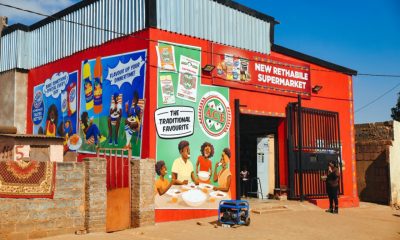Loadshedding
South Africa’s blackouts plunge solar-powered town into darkness

Frustration and anger have enveloped Frankfort as a legal battle with load shedding forcing a town into darkness. According to Energy News, Frankfurt, 140 kilometres south of Johannesburg, had embraced locally produced energy in February to mitigate the crippling nationwide power cuts lasting up to 12 hours daily.
However, Eskom, the beleaguered monopoly, won a court case on a technicality last month, resulting in a heartbreaking situation where locals are now forced to endure power outages like everyone else. This setback has left the residents bewildered and resentful, especially considering the dire energy crisis South Africa is facing.
Hans Pretorius, a local cereal farmer, expressed the frustration felt by the community, stating, “They can’t produce any electricity, and we are not allowed to use the electricity that we produce. It doesn’t make sense.” He relies on electricity to power the irrigation system for his crops. He believes that not being able to utilise their solar-generated electricity is a matter of survival.
Also read: Eskom escalates power cuts to Stage 6 amidst cold weather demand spike
The energy crunch in South Africa has reached unprecedented levels, with frequent and prolonged blackouts plaguing the country due to Eskom’s coal-powered plants struggling to meet the demand. These outages, euphemistically referred to as load shedding, can last for half a day and are projected to worsen during the upcoming southern hemisphere winter. The economic cost of these power cuts is staggering, estimated at over $1 billion in lost production each month.
Various sectors feel the dire consequences of the energy crisis. Gary Mbundire, a farm manager, tragically lost 5,000 chickens in January due to the lack of ventilation caused by power outages. Thando Keswa, a business owner, was forced to close his takeaway business in Frankfort’s township due to the exorbitant cost of running a generator.
In response to the energy challenges, local businesses and individuals invested around 100 million rand ($5.2 million) to construct a solar farm, which they completed in December. Operated by Rural Free State (RFS), a subsidiary managing network distribution for the local municipality, the solar plant has a capacity of 4.26 megawatts. It enabled the distributor to implement its reduced blackout schedule, offering some relief to the community.
Also read: Ramokgopa admitted his lack of knowledge about electricity
However, Eskom barred the plant from operating independently, leading RFS to seek legal recourse. Eskom argued that RFS had not obtained authorisation to implement its blackout program, emphasising that Frankfort still needed to draw power from Eskom’s grid. The lack of battery storage and the town’s reliance on Eskom’s grid were cited as reasons for Eskom’s intervention, claiming that allowing Frankfort to bypass their blackout schedule could jeopardise the stability of the national grid.
Regrettably, Eskom emerged victorious in court due to a legal technicality, as the local municipality failed to join the lawsuit. Consequently, RFS had to switch off some of the solar panels to align with the scheduled outages, resulting in wasted electricity that is desperately needed.
Critics have accused Eskom of acting like a “village bully” and prioritising its monopoly over embracing additional generation capacity. A petition launched by Frankfort residents has garnered over 1,400 signatures, urging the government to intervene and resolve the stalemate. The situation has raised questions about fairness and the need for a more inclusive and sustainable approach to address the energy crisis.
Also read:
Acting CEO Calib Cassim Targets Stage 6 Limit for Load-Shedding in Eskom’s Winter Battle






















